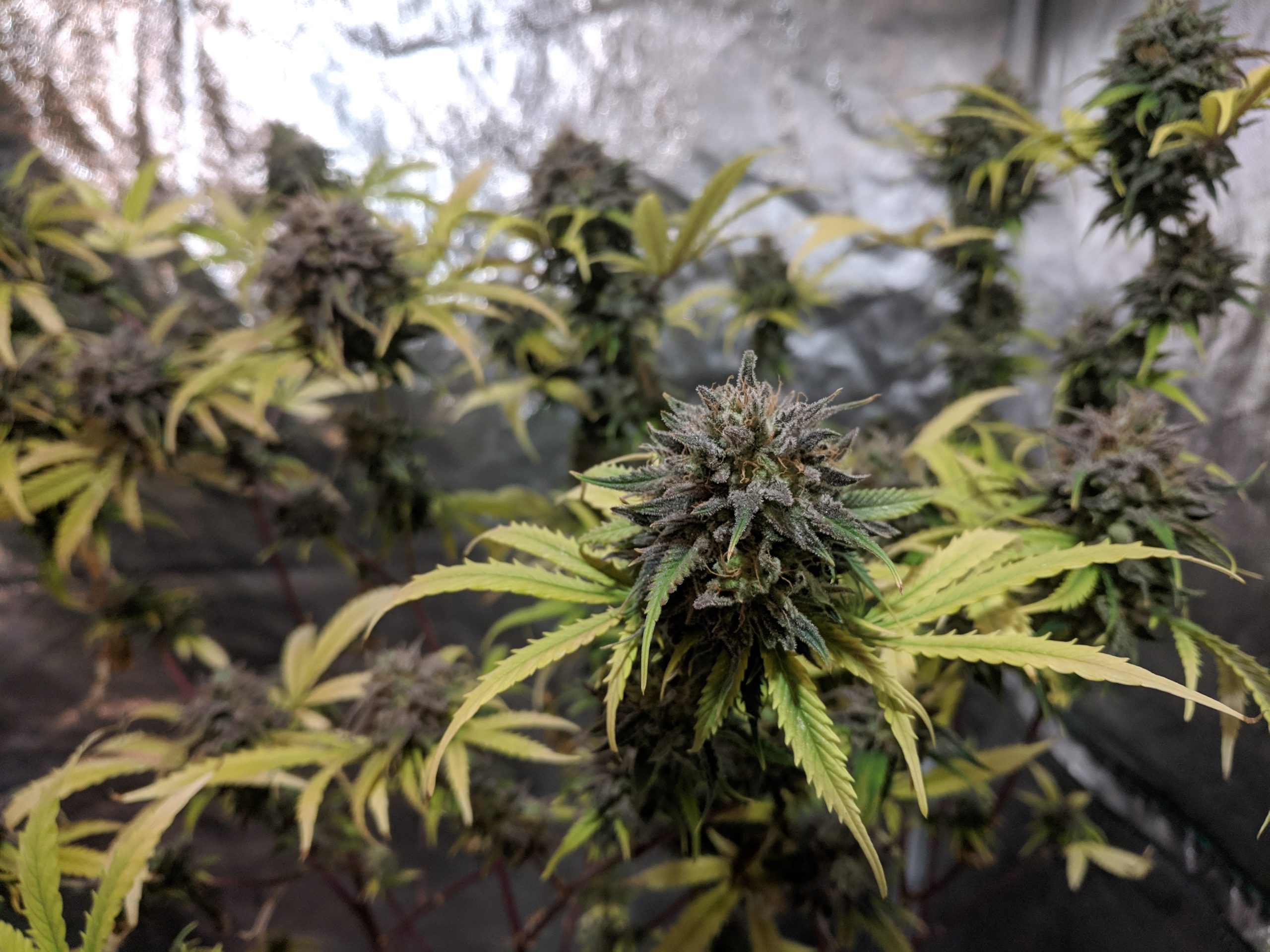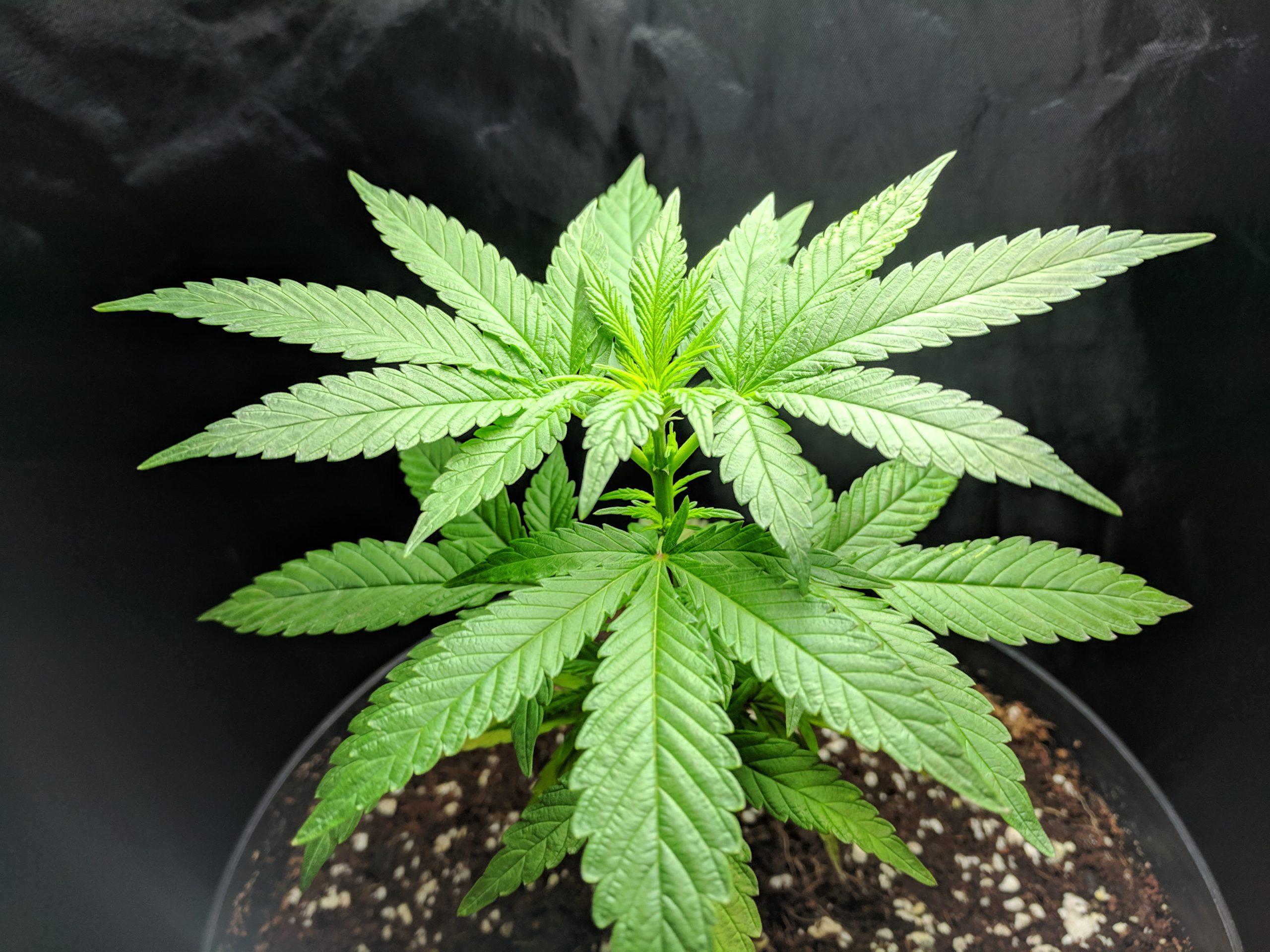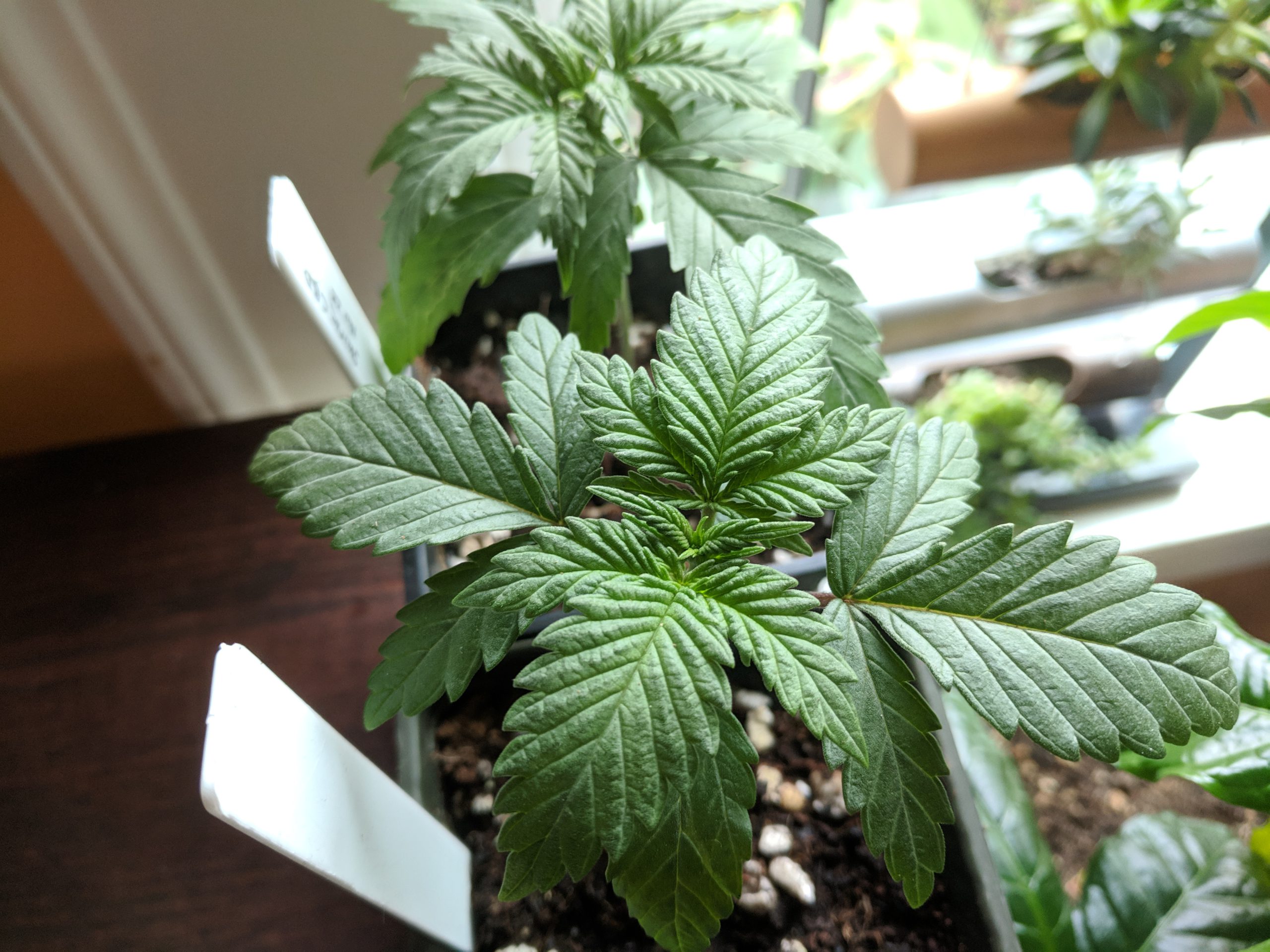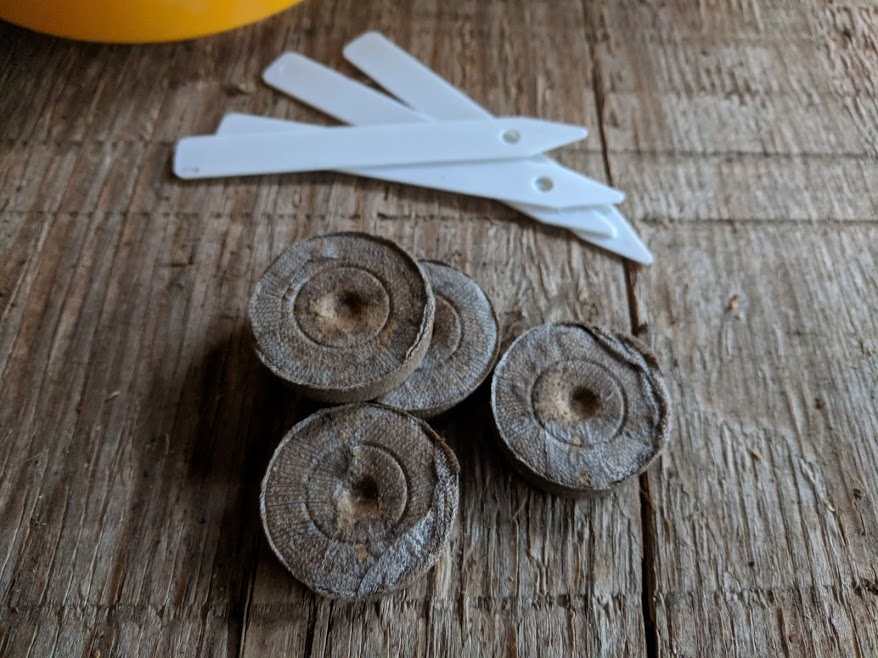In this guide, we’ll walk through the cannabis life cycle. When thinking about growing cannabis, it’s important to understand three basic facts:
Fact 1: Cannabis is an annual plant
Marijuana is known as an ‘annual’ because its entire lifecycle occurs within a year. When grown outdoors, seeds, which have lain dormant through winter, germinate and grow into seedlings in spring; vegetate and mature throughout summer; in fall they flower, producing and pollinating seeds; before dying by winter. The next year, it all begins again.
Fact 2: Cannabis is a dioecious plant
To be dioecious means that each plant (almost) always has only either male or female reproductive organs. Each plant is explicitly male or female. This is important because when growing cannabis for consumption, you want to select only flowers of female plants not pollinated by males; pollinated flowers produce seeds, which drastically reduce potency and flower yield.
Fact 3: Flowering can start either through photoperiodism or automatically.
Most standard strains of cannabis are known as ‘photoperiod,’ because flowering is induced by altering lengths of exposure to light. While nights (periods of darkness) are shorter than 12 hours, cannabis will continue vegetative growth. Once nights are longer than 12 hours, they will begin to develop flowers. Outdoors, this happens in the lengthening nights/shorter days of fall. Indoors, we can choose when this happens by manipulating light and dark hours.
There is another kind of cannabis plant, though, that is ‘auto-flowering’; flowering begins a predetermined amount of time after germination, regardless of exposure to light. The amount of time before flowering varies, based on the individual strain. Every modern strain was bred from a single small hemp plant known as Cannabis Ruderalis, which had the auto-flowering trait, but didn’t produce much THC. Over the years, it has been cross-bred with Cannabis Indica and Cannabis Sativa to raise THC levels. While auto-flowering strains are generally less potent and productive compared to their photoperiod counterparts, the convenience of not worrying about light control makes them a great option in many situations.

1) Seedling Phase
The seedling phase begins when the young plant first emerges from the seed and extends for the first few weeks of life. Seedlings are born with a pair of small round leaves, called embryonic cotyledons, that formed in the seed. The young seedling uses these leaves to bootstrap photosynthesis and growth processes. In the next days, it will begin building its first true leaves. The initial sets will have a single point, the next three, before finally developing the five- and seven-point leaves that we associate with adult cannabis plants.
The primary objective of the seedling phase it to allow the plant to develop hearty leaves for photosynthesis, healthy roots to slurp water and nutrients, and a sturdy stem to support the plant. It’s best to let the seedling do its job with minimal interference from the grower.
Seedling Care
Lights
Provide ample light, though not too bright, for over 12 hours each day. Compact fluorescent light, low powered LED, or a window sill will do fine. There are indications that 24 hours of light per day can harm the vascular systems of young cannabis plants, so we recommend between 16 and 18 hours of light per day while for seedlings. Learn more about lighting options and schedules here.
Temperature/Humidity
During the seedling stage, we are trying to replicate warm spring conditions – ideal temperatures are between 70° and 80°F, and should never drop below 60°F. Seedlings benefit from higher air humidities while root structures are forming, 60-70% being ideal.
Water/Nutrients
Water should have a pH level balanced between 5.5 and 6.5. Watering seedlings are simple if you follow these two basic rules:
DO keep the soil warm and moist throughout the seedling phase.
DO NOT flood or over-saturate the soil (no sitting water), as this will prevent the roots from getting enough oxygen, and block access to nutrients. Too much water and the seedling will ‘damp out’ and fail.
Young seedlings get all the nutrients they need from water and light, and excessively high levels of nutrients in the soil will ‘burn’ their leaves. Peat plugs have almost no nutrient content, making them ideal mediums for young seedlings. Learn more about watering and nutrients here.
Transplanting
The best practice is to keep plants in containers suitable to their size. If the container is too big for the plant to use all the water, they tend to damp out from oxygen deprivation. If the container is too small, the plant can become ‘root-bound’ and cease growing. Start off with small containers for small plants, and transplant to bigger ones as they grow. Learn more about containers and transplanting here.
Training & Pruning
Young seedlings are tender, and under rapid development, and so shouldn’t be trained or pruned at this stage. Droopy seedlings can be propped up with a stake.
2) Vegetative Phase
The vegetative phase begins when the young cannabis plant starts producing five- and seven-point leaves. At this point, the young plant will need to start consuming large quantities of water, light, and other nutrients, as they enter this stage of rapid growth.
The primary objective during the vegetative phase is to create as many bud sites and as much plant mass as possible while training the plant into the final growth shape before flowering begins. We do this through training, topping and selective pruning. Cannabis plants in the vegetative stage are incredibly robust and quickly regenerate from injuries, pests, and nutrient deficiencies. Once a plant enters the flowering stage, it becomes much less resilient and pliable, so use the vegetative stage to position your plant, so to make the most out of flowering.
Vegetative Care
Lights
Provide ample bright lights for over 12 hours per day. High powered LEDs or HPS are recommended for the most productive grows. Learn more about lighting options and schedules here.
Temperature/Humidity
During the vegetative stage, we are trying to replicate summer conditions. Ideal temperatures are between 70° and 85°F (21°C-30°C) and should not go above 90°F (32°C) or below 60°F (15°C). Vegetating plants need less humidity than seedlings since their mature roots can pull ample moisture from the soil. Increased humidity increases the risk of mold, rot, and pests, so keep the relative humidity around 50%. For optimal conditions, start vegging at 60%, and lower to 45-50% through vegetation.
Water/Nutrients
For watering, vegetating plants follow the same rule as all other phases:
DO keep the soil warm and moist throughout the vegetation phase.
DO NOT flood or over-saturate the soil, since this will prevent the roots from getting enough oxygen, and cause other nutrient deficiencies.
A good rule of thumb is to wait until the top two inches of medium (knuckle deep) is dry before watering again. Another method is to gauge from the weight of the plant. If you see the leaves start wilting, you’ve waited too long. Have no fear though, young cannabis plants are amazingly strong and resilient, and will most likely bounce back!
Vegetating plants use macronutrients for basic building blocks in its rapid growth process. During the vegetative phase, nitrogen is essential, and potassium less so – though those roles reverse during flowering. Vegetating plants also need micronutrients, like iron, calcium, and zinc, but too many micronutrients can block access to macronutrients. Most nutrients are only available to the plant at specific pH ranges. Using balanced, multi-faceted nutrient systems are the best mechanism to ensure your plants get everything they need. Learn more about watering and nutrients here
Transplanting
Make sure to transplant vegging plants as they outgrow their current container, and that they are in their final container before starting to flower. Learn more about containers and transplanting here.
Training & Pruning
Vegetating cannabis grows rapidly; we call it weed for a reason! Since our primary objective in the vegetative state is to get into the desired shape, we use a variety of techniques available to manipulate vegetating plants, including training, topping, cutting and breaking. Learn about topping here.
3) Flowering Phase
The flowering phase is where the plant produces sex organs. Females will produce the flowers we know as buds. Males will produce pollen sacs, in bunches that look like grapes.
The primary objective during the flowering phase is to grow large, healthy buds. Almost all shaping and manipulation happens during the vegetative stage. During the flowering stage, the stems will become woody and rigid. Flowering plants do not recover from pests, deficiencies, and other accidents so quickly, so you treat your plants with care while they are flowering.
Flowering Care
Lights
Provide ample bright light for less than 12 hours per day. Photoperiod plants require at least 12 hours of uninterrupted darkness per day to flower. If the darkness is interrupted often, the plant will leave the flowering state, and revert to vegetating. High powered LEDs or HPS are recommended for the most productive grow. Learn more about lighting options an schedules here.
Temperature/Humidity
With flowering plants, we are trying to replicate late summer and fall conditions. Ideal temperatures are between 70° and 85°F (21°C-30°C), and should not go above 90°F (32°C) or below 60°F (15°C). Flowering plants need less humidity than in the seedling or vegetative stages. Increased humidity runs the risk of mold, rot, and pests, so keep the relative humidity around 40-45%.
Water/Nutrients
For watering, flowering plants follow the same rule as all other phases:
DO keep the soil warm and moist throughout the vegetation phase.
DO NOT flood or over-saturate the soil, since this will prevent the roots from getting access to enough oxygen, and cause nutrient-deficiencies.
Note: flowering plants are not as resistant to over- and under-watering as vegetating plants.
Flowering plants also need macro- and micronutrients, and it is essential to keep these levels balanced. Unlike the vegetation phase, plants in flower do not require as much nitrogen (too much can slow production) but need increased potassium. Using balanced, multi-faceted nutrient systems will still be the best mechanism to ensure your plants get what they need. Learn more about watering and nutrients here
Transplanting
Cannabis plants should not be transplanted in flower if it can be avoided. Since transplanting is incredibly stressful, you should make every effort to have the plant in its final container before starting flower. If transplanting cannot be avoided, use extreme care in transplanting to minimize stress and damage.
Training & Pruning
Vegetating cannabis grows rapidly, and is extremely resilient to both high and low-stress training. This is NOT the case for flowering plants and you should not cut, injure or perform any other high-stress activity on your flowering plant. After a few weeks of flowering, the plant will become rigid, and vertical growth will slow – at which point even LST techniques should no longer be used.
Prune your flowering plants selectively. I remove small bud sites from the understory to focus growth on the big buds up top. You can also pull fan leaves that are damaged or excess fan leaves for additional airflow. Always be gentle with your flowering plant, and never take too much at one time.
Life Cycle FAQs
How long does it take to raise a cannabis plant from start to finish?
For photoperiod plants, the amount of time will vary based on how long you keep it in vegetation before you switch to flower. Since you can induce flowering immediately after seedling (3 weeks old), and most strains take at least eight weeks in flower, 10 to 11 weeks is the minimum possible. The longer you leave the plant in veg, the larger the flowering plant will be.






